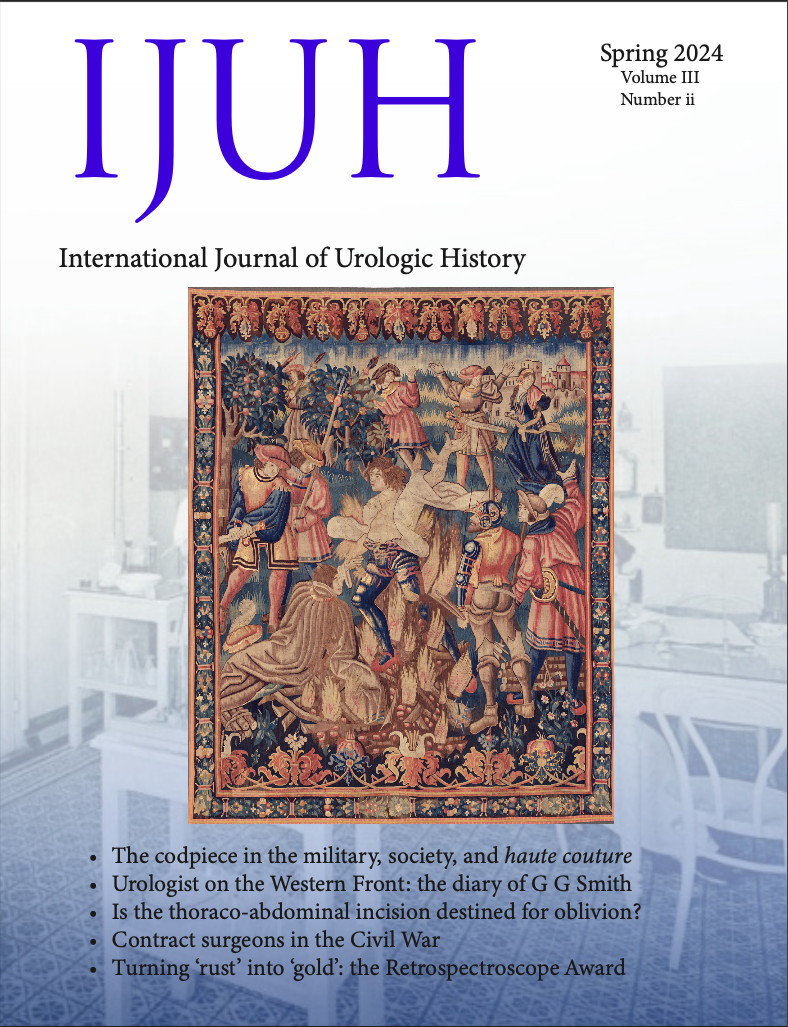IJUH
International Journal of Urologic History
A Cut Above the Rest: The Historic Perspectives of Circumcision and Anesthesia
Ellen Lutnick, Kevin Pranikoff, Kyle M Waisanen
First Published: July 1, 2022
DOI: 10.53101/IJUH.2.1.752201
Download PDF
Abstract
Objectives
Circumcision is the oldest known recorded surgical procedure dating to at least 4000 BCE and held religious, cultural, and military significance. Preputial resection connoted contrasting meanings among different cultures; in some, circumcision was and remains an important transtion into infancy and then adulthood. In Bronze Age and early Egyptian cultures, however, circumcision was performed on vanquished enemies and improved upon the morbidity and mortality of phallic resectoin as a war trophy. The circumcision of Jesus was a significant subject for many Medieval and Renaissance artists who often portrated the event as an allegroical commentary on contemporary socio-political events. While there has been much literature, anthropological analysis, and art on circumcision, little is known about the anesthesia provided to those undergoing the procedure, especially those for whom the act was not a punitive militaristic procedure. We aimed to identify descriptions of the anesthesia provided to patients or victims undergoing circumcision and how the anesthesia may have evolved into the modern techniques used in the modern era.
Methods
We performed a literature review via PubMed journal articles, texts, and historical discussions detailing the evolution of circumcision and accompanying anesthesia throughout history.
Results
Earliest records of circumcision described religious rather than scientific rationale, marking a boy’s ascension to manhood. Documentation of the earliest practices of anesthesiology are relevant to urology through these traditions. Circumcision is first noted in Egyptian temple hieroglyphics dated to 4000 BCE, depicting young men restrained with a priest performing the cut wielding a knife. As early as 2500 BCE, circumcision in ancient Egypt was the first known surgical procedure utilizing anesthesia. A mixture rendered from calcium carbonate and acetic acid formed carbon dioxide on the prepuce resulting in the first rendition of cryo-analgesia. Egypt was not the only culture performing circumcision during this time period. Assyrian records dating back to 400 BCE describe a similar methodology, but also transcribed another primitive method of anesthesia. Assyrians utilized digital compression of the carotid arteries to produce anesthetic effects of both altered consciousness and decreased procedural pain. Carotid compression was commonplace enough that it influenced the language for which the carotid blood vessels are described in both Greek and Russian with translation as “The Artery of Sleep.” The Jewish tradition of brit milah utilizes a few drops of wine in the mouth of the infant, both as a form of analgesia and symbolic of the sealed covenant. It is hypothesized that the sugar interacts with the opiate receptors in the brain which is enhanced by the suckling action, providing comfort.
Conclusions
Since their earliest documented history, anesthetic techniques have contributed to and been intertwined with the practices of circumcision.
Editor in Chief: John L. Phillips, MD
Journal Design: Akhil A. Saji, MD
DOI: 10.53101
US ISSN: 2769-2183
